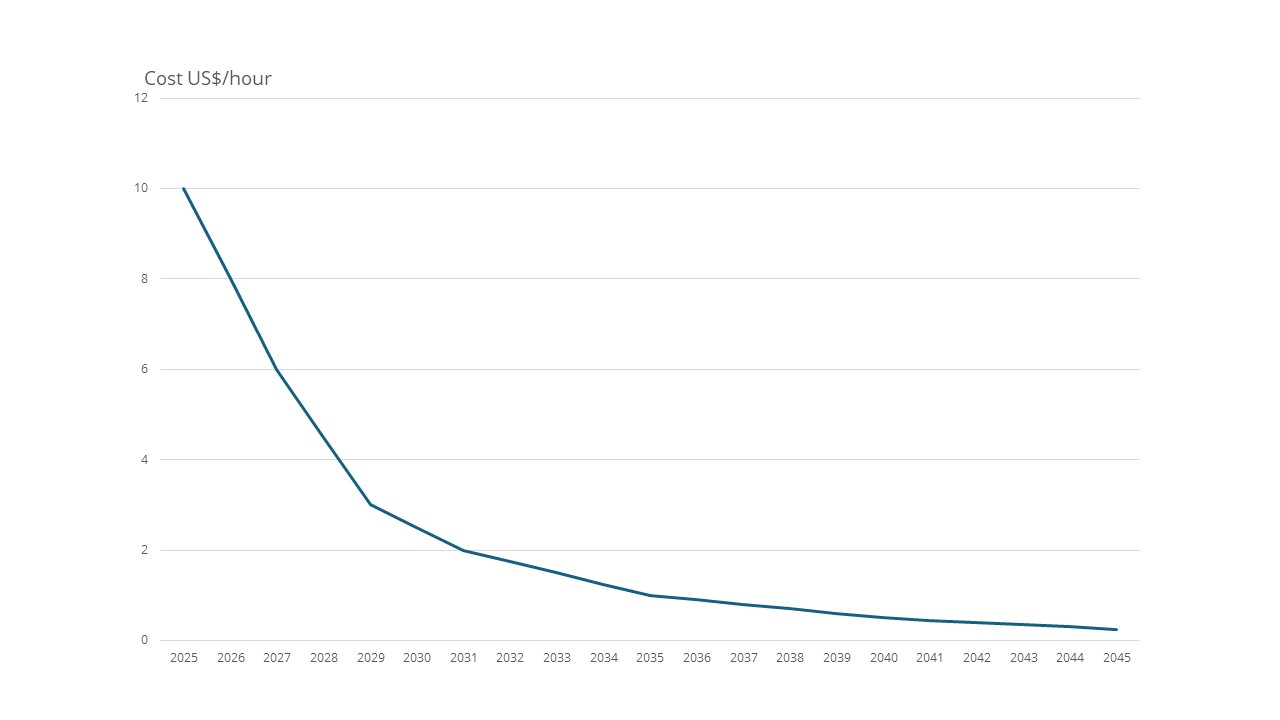Author: Steve Nuttall | Posted On: 31 Jul 2024
In an era of rapid technological advancement and shifting market dynamics, businesses across all sectors must prepare for significant transformation and disruption. At a recent industry conference, I presented a keynote address on key megatrends reshaping the global business landscape. These trends, particularly the integration of AI and robotics, have far-reaching implications for businesses in all sectors.
artificial intelligence: the game changer
Artificial Intelligence (AI) is set to revolutionise industries across the board. According to the Tech Council of Australia, AI is estimated to contribute between $45 billion and $115 billion annually by 2030, depending on the pace of adoption. This range is equivalent to 2-5% of the Australian economy. The main drivers of this value are expected to be productivity gains (70%), quality improvements (20%), and new products and services (10%).
However, the adoption of AI among Australian SMEs is still in its early stages. This presents both a challenge and an opportunity for businesses to gain a competitive edge by embracing AI technologies. Real-world applications of AI are evident across various industries, and their potential for future impact is vast. In insurance, we’re seeing intelligent damage analysis streamlining claims processes. Manufacturing benefits from predictive maintenance, optimising equipment performance and reducing downtime. Healthcare applications include early disease detection, personalised treatment plans, and drug discovery. In the built environment, smart cities of the future may rely heavily on AI to manage traffic flow, optimise energy usage, and respond to environmental challenges in real-time.
robotics: the workforce of the future
While AI is revolutionising the digital realm, its true transformative power is amplified when combined with advanced robotics, particularly humanoid robots. This convergence is set to redefine not just individual tasks, but entire business processes and models across industries.
One of the most striking aspects of this robotic revolution is the projected dramatic decrease in the cost of humanoid robots over the next two decades. According to RethinkX, the cost capability of operating a humanoid robot is expected to plummet from around $10 per hour in 2025 to less than $1 per hour by 2035. By 2045, the cost is projected to approach nearly zero.
The key factor is that the cost-capability of humanoid robots is expected to improve by at least one order of magnitude every eight years. To understand what “order of magnitude” means, think of it as a way of saying “ten times better”. So, every eight years, humanoid robots are projected to become at least ten times more cost-effective. This could mean they become ten times cheaper, ten times more capable, or some combination of both.
humanoid robot cost curve
Source: RethinkX

This has profound implications for businesses across all industries. As humanoid robots become more affordable, their integration into various workplaces becomes not just possible, but economically advantageous. Whilst it may disrupt traditional employment models, it also offers the potential for dramatically increased productivity, improved safety in hazardous environments, and the ability for businesses to operate 24/7 with greater efficiency.
labour market implications
As robots take over more routine tasks, human workers will likely shift towards roles that require creativity, emotional intelligence, and complex problem-solving – skills that remain uniquely human.
New job roles are likely to emerge across industries, requiring diverse skill sets that combine traditional knowledge with expertise in emerging technologies and sustainability practices. Examples might include human-machine interaction collaboration coaches, robotics lifecycle managers. and autonomous systems safety coordinators and circular economy AI optimisers.
In conclusion, businesses across all sectors are facing a period of unprecedented change. By embracing these megatrends and preparing for the challenges and opportunities they bring, organisations can position themselves for success in tomorrow’s business landscape.
Remember, we often overestimate short-term change whilst underestimating long-term transformations. The key is to start preparing now for the significant changes that will shape industries over the next decade.
Want to stay up to date with our latest content? Sign up for our newsletter below.
Posted in QN, Healthcare, Uncategorized

